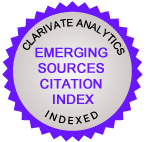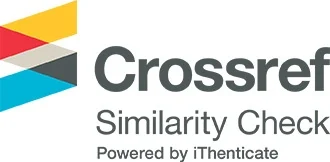Generic frames on the front covers of the Chilean press related to the social outbreak of 2019
-
Pablo Matus
 pmatus@uc.cl
pmatus@uc.cl
-
Magdalena Vitores
 msvitores@uc.cl
msvitores@uc.cl
-
Claudia Ramírez Friderichsen
 cramiref@uc.cl
cramiref@uc.cl
Downloads
DOI:
https://doi.org/10.56754/0718-4867.2024.3333Abstract
Introduction: One of the most striking consequences of the social outbreak in Chile in 2019, from the perspective of communication studies, was the change in the perception and assessment of the media by the citizens. In this context, it is interesting to understand how the media represented that political and social phenomenon. Objective: To describe how the Chilean national and metropolitan press (El Mercurio, La Tercera, La Segunda, Las Últimas Noticias, La Cuarta, HoyxHoy, and Publimetro) reported on the social outbreak of 2019 on their covers from the perspective of their generic news frames. Methodology: A multimodal content analysis was conducted, simultaneously interpreting verbal and iconic messages related to the outbreak. Results: The most relevant frame in the coverage was conflict, followed by frames of human interest and attribution of responsibility. The economic consequences frame was much less important, while the morality frame only had a marginal contribution. Discussion: Given the interpretative nature of this analysis, we also evaluated the presence of two potential new generic frames: neutrality, which had low presence, and orientation, which turned out to be very important in one of the newspapers, and we believe it has potential for the study of the popular press. Conclusions: The orientation frame seems to be highly representative of the popular press, and therefore, it has the potential to become a generic frame applicable to other studies.
Palabras Clave
Adoni, H., & Mane, S. (1984). Media and the Social Construction of Reality: Toward an Integration of Theory and Research. Communication Research, 11(3), 323-340.
Aldana, C. (21 de octubre, 2019). Apaga la tele, enciende la radio. Diario UChile. https://bit.ly/3hf7kJT
Aruguete, N. (2011). Framing. La perspectiva de las noticias. La Trama de la Comunicación, 15, 67-80. https://doi.org/10.35305/lt.v15i0.52
Aruguete, N., & Koziner, N. (2014). La cobertura mediática del “7d” en la prensa argentina. Aplicación de encuadres noticiosos genéricos a los principales diarios nacionales. Disertaciones, 7(1), 129-165.
Bateson, G. (1987). A Theory of Play and Fantasy. En Bateson, G., Steps to an Ecology of Mind (pp. 138-148). Jason Aronson.
Biagi, S. (2009). Impacto de los medios de comunicación (8a ed.). Cengage Learning.
Boesman, J., & Van-Gorp, B. (2016). An Insidious Poison or a Door to the Story? A Newsroom-Centered Approach to Framing. Journalism Practice, 11(5), 559-576. https://doi.org/10.1080/17512786.2016.1159920
Bustos, D. (7 de noviembre, 2019). Apaga la tele. El Desconcierto. https://bit.ly/3uDLMd1
Cabalín, C., & Antezana, L. (2016). La educación en portada: La visualización de la política educacional en la prensa. Cuadernos.info, (39), 195-207. http://dx.doi.org/10.7764/cdi.39.914
Coleman, R. (2010). Framing the Pictures in Our Heads: Exploring the Framing and Agenda-Setting Effects of Visual Images. En D’Angelo, P., & Kuypers, J. (Eds.), Doing News Framing Analysis. Empirical and Theoretical Perspectives (pp. 233-261). Routledge.
Consejo Nacional de Televisión (CNTV) (2021). Estudio de confianza en la TV. CNTV. https://www.cntv.cl/estudio/estudio-confianza-en-la-television/
D’Angelo, P. & Kuypers, J. (2010). Introduction. Doing News Framing Analysis. En D’Angelo, P. & Kuypers, J. (Eds.), Doing News Framing Analysis. Empirical and Theoretical Perspectives (pp. 1-13). Routledge.
D’Angelo, P. (2002). News Framing as a Multiparadigmatic Research Program: A Response to Entman. Journal of Communication, 52(4), 870-888. https://doi.org/10.1111/j.1460-2466.2002.tb02578.x
____ (2018). Prologue—A Typology of Frames in News Framing Analysis. En D’Angelo, P. (Ed.), Doing News Framing Analysis II. Empirical and Theoretical Perspectives (pp. xxiii-xl). Routledge.
Dan, V. (2018). Integrative Framing Analysis: Framing Health Through Words and Visuals. Taylor & Francis.
De-Vreese, C. H. (2005). News Framing: Theory and Typology. Information Design Journal & Document Design, 13(1), 51-62. https://doi.org/10.1075/idjdd.13.1.06vre
Dor, D. (2003). On Newspaper Headlines as Relevance Optimizers. Journal of Pragmatics, 35(5), 695-721. https://doi.org/10.1016/S0378-2166(02)00134-0
Dussaillant, P. (2004). La neutralidad como forma de encuadre en una campaña electoral. Comunicación y Sociedad, 17(2), 45-71.
Entman, R. (1993). Framing: Toward Clarification of a Fractured Paradigm. Journal of Communication, 43(4), 51-58. https://doi.org/10.1111/j.1460-2466.1993.tb01304.x
Feedback & Universidad Diego Portales (UDP) (2021). 13ª Encuesta sobre Participación, Jóvenes y Consumo de Medios. UDP. https://ciclos.udp.cl/proyectos/encuesta-de-jovenes-participacion-y-medios/
Gamson, W., & Modigliani, A. (1989). Media Discourse and Public Opinion on Nuclear Power: A Constructionist Approach. American Journal of Sociology, 95(1), 1-37. https://doi.org/10.1086/229213
Goffman, E. (1974). Frame Analysis. An Essay on the Organization of Experience. Northeastern University.
Grassau, D., Valenzuela, S., Bachmann, I., Labarca, C., Mujica, C., Halpern, D., & Puente, S. (2019). Estudio de opinión pública: Uso y evaluación de los medios de comunicación y las redes sociales durante el estallido social en Chile. Pontificia Universidad Católica de Chile.
Gronemeyer, M. E., & Porath, W. (2017). Framing Political News in the Chilean Press: The Persistence of the Conflict Frame. International Journal of Communication, 11, 2940-2963.
Gronemeyer, M. E., Del-Pino, M., & Porath, W. (2020). The Use of Generic Frames in Elite Press: Between Conflict, Neutrality, and an Empowered Journalist. Journalism Practice, 14(8), 954-970.
Herrscher, R. (12 de diciembre, 2019). Chile despertó, es momento de que despierte el periodismo. The New York Times. https://bit.ly/3UPpBey
Hertog, J., & McLeod, D. (2001). A Multiperspectival Approach to Framing Analysis: A Field Guide. En Reese, S., Gandy, O., & Grant, A. (Eds.), Framing Public Life. Perspectives on Media and Our Understanding of the Social World (pp. 141-162). Lawrence Earlbaum.
Iyengar, S. (1991). Is Anyone Responsible? How Television Frames Political Issues. University of Chicago.
Kenix, L. J. (2011). Alternative and Mainstream Media: The Converging Spectrum. Bloomsbury.
Koziner, N. S. (2013). Antecedentes y fundamentos de la teoría del framing en comunicación. Austral Comunicación, 2(1), 1-25. https://doi.org/10.26422/aucom.2013.0201.koz
Kress, G., & Van-Leeuwen, T. (2001). Multimodal Discourse. The Modes and Media of Contemporary Communication. Hodder Education.
Krippendorff, K. (1990). Metodología de análisis de contenido. Teoría y práctica. Paidós.
Lakoff, G. (2006). Thinking Points: Communicating Our American Values and Vision. Farrar, Straus and Giroux.
____ (2014). The All New Don’t Think of an Elephant! Know Your Values and Frame de Debate. Chelsea Green.
Lecheler, S., & De-Vreese, C. H. (2019). News Framing Effects: Theory and Practice. Routledge.
Lippmann, W. (2003). La opinión pública. Cuadernos de Langre.
Luhmann, N. (2000). La realidad de los medios de masas. Anthropos.
Marín-Albaladejo, J. A., & Zamora-Medina, R. (2014). Aproximación integradora en la investigación sobre la teoría del framing desde su condición multiparadigmática. Anuario Electrónico de Estudios en Comunicación Social, “Disertaciones”, 7(1), 6-40.
Matthes, J. (2012). Framing Politics: An Integrative Approach. American Behavioral Scientist, 56(3), 247-259. https://doi.org/10.1177/0002764211426324
Mayol, A. (2019). Big Bang. Estallido social 2019. Modelo derrumbado, sociedad rota, política inútil. Catalonia.
McCombs, M., & Valenzuela, S. (2021). Setting the Agenda: Mass Media and Public Opinion. Polity.
Messaris, P. (1998). Visual Aspects of Media Literacy. Journal of Communication, 48(1), 70-80. https://doi.org/10.1111/j.1460-2466.1998.tb02738.x
Messaris, P., & Abraham, L. (2001). The Role of Images in Framing News Stories. En Reese, S., Gandy, O., & Grant, A. (Eds.), Framing Public Life. Perspectives on Media and Our Understanding of the Social World (pp. 215-226). Lawrence Earlbaum.
Olivares, J. (Coord.) (2021). Apaga la TV. Apuntes sobre prensa y comunicación en tiempos de revuelta popular. LOM.
Peirce, C. S. (2005). El ícono, el índice y el símbolo [Traducción de Sara Barrena]. Grupo de Estudios Peirceanos, Universidad de Navarra. https://bit.ly/3UHw1wc
Peña, C. (2020). Pensar el malestar. La crisis de octubre y la cuestión constitucional. Taurus.
Reese, S. (2001). Prologue—Framing Public Life: A Bridging Model for Media Research. En Reese, S., Gandy, O., & Grant, A. (Eds.), Framing Public Life. Perspectives on Media and Our Understanding of the Social World (pp. 7-31). Lawrence Earlbaum.
____ (2007). The Framing Project: A Bridging Model for Media Research Revisited. Journal of Communication, 57(1), 148-154. https://doi.org/10.1111/j.1460-2466.2006.00334.x
____ (2010). Finding Frames in a Web of Culture. The Case of the War on Terror. En D’Angelo, P., & Kuypers, J. (Eds.), Doing News Framing Analysis. Empirical and Theoretical Perspectives (pp. 17-42). Routledge.
Saavedra, G. (2001). Narradores que saben más. La ‘narrativización’ del discurso y el ‘efecto omnisciente’ en no ficción periodística. Cuadernos de Información, (14), 63-73.
Sádaba, M. T. (2001). Origen, aplicación y límites de la ‘teoría del encuadre’ (framing) en comunicación. Comunicación y Sociedad, 14(2), 143-175.
Salinas, C., & Cabalin, C. (11 de noviembre, 2019). De “El Mercurio miente” a “la tele miente”. Ciper. https://bit.ly/3uEE7Lg
Sánchez-Castillo, S., & Mercado-Sáez, M. T. (2013). Encuadres noticiosos latentes bajo el paradigma positivista. Propuesta de análisis factorial exploratorio. En Vicente-Mariño, M., González-Hortigüela, T., & Pacheco-Rueda, M. (Coords.), Investigar la Comunicación hoy. Revisión de políticas científicas y aportaciones metodológicas: Simposio Internacional sobre Política Científica en Comunicación (Vol. 1, pp. 277-294). Asociación Española de Investigación en Comunicación. https://dialnet.unirioja.es/servlet/articulo?codigo=4228809
Scheufele, B. (1999). Framing as a Theory of Media Effects. Journal of Communication, 49(1), 103-122. https://doi.org/10.1111/j.1460-2466.1999.tb02784.x
____ (2004). Framing-Effects Approach: A Theoretical and Methodological Critique. Communications, 29(4), 401-428. https://doi.org/10.1515/comm.2004.29.4.401
Schwalbe, C., Keith, S., & Silcock, B. W. (2018). Researching the Framing of Still and Moving Images across Media Platforms: Challenges and Opportunities. En D’Angelo, P. (Ed.), Doing News Framing Analysis II. Empirical and Theoretical Perspectives (pp. 221-246). Routledge.
Semetko, H. A., & Valkenburg, P. M. (2000). Framing European Politics: A Content Analysis of Press and Television News. Journal of Communication, 50(2), 93-109. https://doi.org/10.1111/j.1460-2466.2000.tb02843.x
Sunkel, G., & Geoffroy, E. (2001). Concentración económica de los medios de comunicación. LOM.
Tagle, F. (2021). Generic Frames in Corruption Scandals in Chile (2015-2019): Differences and Similarities Between Print and Online Media. International Journal of Communication, 15, 3067-3088.
Tuchman, G. (1978). Making News: A Study in the Construction of Reality. Free Press.
Valenzuela, S., & Arriagada, A. (2009). Competencia por la uniformidad en noticieros y diarios chilenos 2000-2005. Cuadernos de Información, (24), 41-52. https://doi.org/10.7764/cdi.24.33
Vliegenthart, R., & Van-Zoonen, L. (2011). Power to the Frame: Bringing Sociology Back to Frame Analysis. European Journal of Communication, 26(2), 101-115. https://doi.org/10.1177/0267323111404838
Yez, L. (2007). De maleante a revolucionario. Cuadernos de Información, (20), 37-43. https://doi.org/10.7764/cdi.20.1560
Downloads
Published
How to Cite
Issue
Section
License
Copyright (c) 2024 Pablo Matus, Magdalena Vitores, Claudia Ramírez Friderichsen

This work is licensed under a Creative Commons Attribution 4.0 International License.
- Proposed policy to offer Open Access Journals
Authors who publish with this journal agree to the following terms:
a) Authors retain copyright and grant the journal right of first publication with the work simultaneously licensed under a Creative Commons Attribution Attribution (CC -BY 4.0) ![]() that allows others to share the work with an acknowledgement of the work's authorship and initial publication in this journal.
that allows others to share the work with an acknowledgement of the work's authorship and initial publication in this journal.
b) Authors are able to adopt licensing agreements for the non-exclusive distribution of the journal's published version of the work (for example, to post it to an institutional repositories or publish it in a monograph), with an acknowledgement of its initial publication in this journal.
c) Authors are allowed and encouraged to post their work online (For example, in institutional repositories or on their website) prior to and during the submission process, as it can lead to productive exchanges and increase the citation of published work (See The Effect of Open Access).












